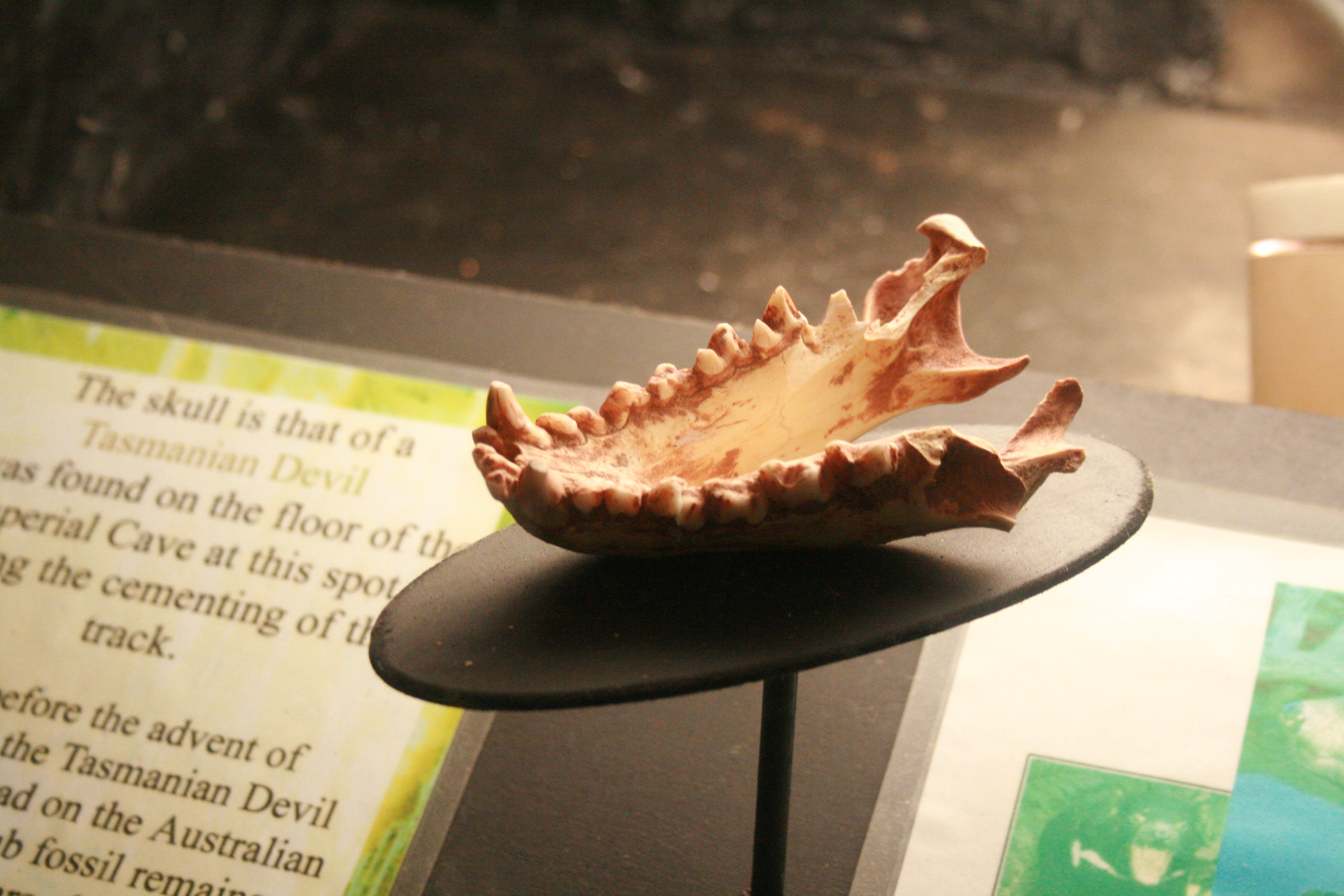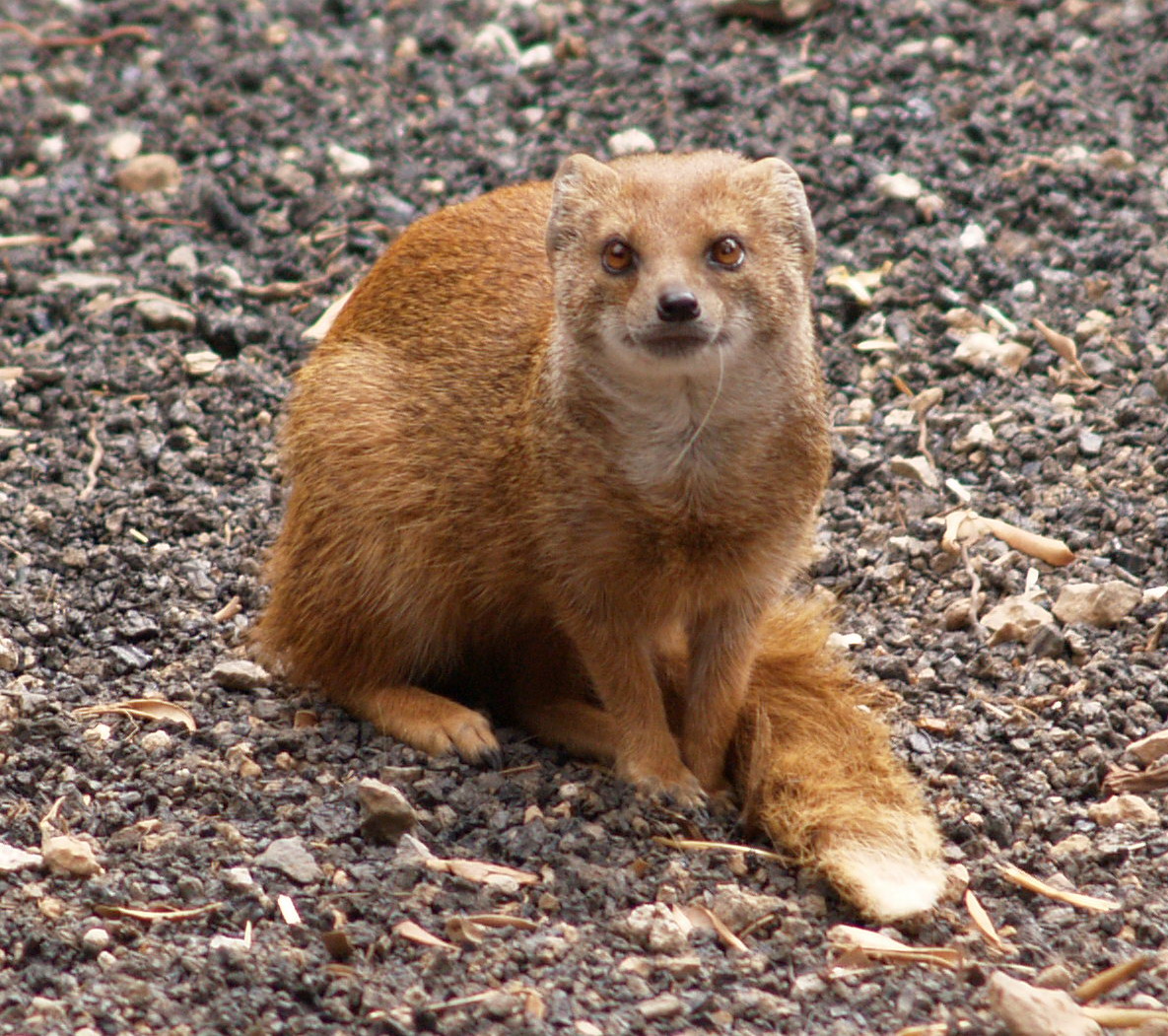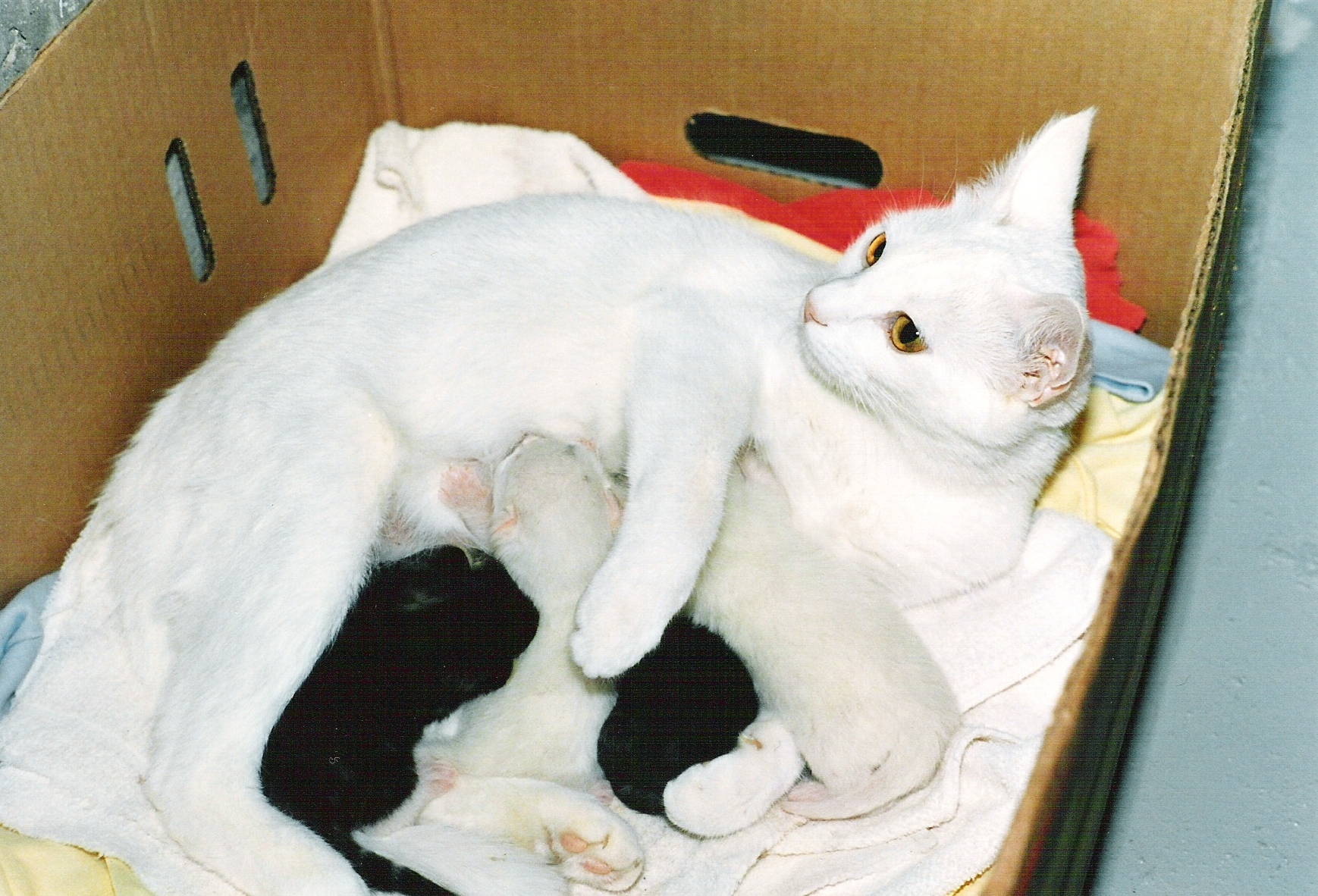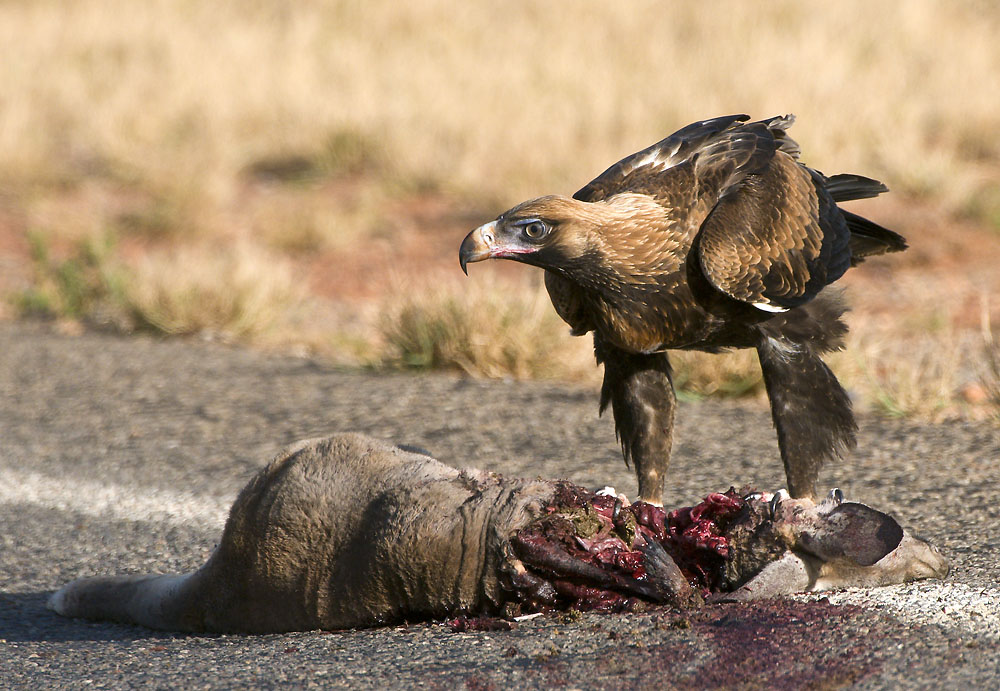|
Dasyurids
The Dasyuridae are a family of marsupials native to Australia and New Guinea, including 71 extant species divided into 17 genera. Many are small and mouse-like or shrew-like, giving some of them the name marsupial mice or marsupial shrews, but the group also includes the cat-sized quolls, as well as the Tasmanian devil. They are found in a wide range of habitats, including grassland, underground, forests, and mountains, and some species are arboreal or semiaquatic. The Dasyuridae are often called the 'marsupial carnivores', as most members of the family are insectivores. Characteristics Most dasyurids are roughly the size of mice, but a few species are much larger. The smallest species is the Pilbara ningaui, which is from in length, and weighs just , while the largest, the Tasmanian devil, is long, and weighs from . The smaller dasyurids typically resemble shrews or mice in appearance, with long tails and narrow, pointed noses. The larger species bear a resemblance to such plac ... [...More Info...] [...Related Items...] OR: [Wikipedia] [Google] [Baidu] |
Tasmanian Devil
The Tasmanian devil (''Sarcophilus harrisii''; palawa kani: ''purinina'') is a carnivorous marsupial of the family Dasyuridae. It was formerly present across mainland Australia, but became extinct there around 3,500 years ago; it is now confined to the island of Tasmania. The size of a small dog, the Tasmanian devil became the largest carnivorous marsupial in the world following the extinction of the thylacine in 1936. It is related to quolls, and distantly related to the thylacine. It is characterised by its stocky and muscular build, black fur, pungent odour, extremely loud and disturbing screech, keen sense of smell, and ferocity when feeding. The Tasmanian devil's large head and neck allow it to generate among the strongest bites per unit body mass of any extant predatory land mammal. It hunts prey and scavenges on carrion. Although devils are usually solitary, they sometimes eat and defecate together in a communal location. Unlike most other dasyurids, the devil the ... [...More Info...] [...Related Items...] OR: [Wikipedia] [Google] [Baidu] |
Pilbara Ningaui
The Pilbara ningaui (''Ningaui timealeyi''), sometimes known as Ealey's ningaui, is a tiny species of marsupial carnivore found in Australia. Taxonomy The species was described by Mike Archer in 1975, distinguishing the new taxon from other dasyurids by nominating it as the type species of a new genus. Archer provided a description for a second species of ''Ningaui'', the more widely distributed ''Ningaui ridei''. The holotype is a specimen obtained escaping a fire in spinifex country, a collection made by A. Snell in 1963 at Mount Robinson in the northwest of Australia. Other material examined included a specimen collected in 1957 by E. H. M. Ealey of Monash University, then working as a field officer for the CSIRO, his informal name, 'Tim' Ealey. is the eponym of the specific epithet. Description The Pilbara ningaui is a very small species of marsupial, in length. The fur is spiky and dishevelled in appearance, the upper parts are a mix of ginger and brown hairs, or gre ... [...More Info...] [...Related Items...] OR: [Wikipedia] [Google] [Baidu] |
Pouch (marsupial)
The pouch is a distinguishing feature of female marsupials and monotremes, and rarely in males as well, such as in the yapokNogueira, José Carlos, et al.Morphology of the male genital system of Chironectes minimus and comparison to other didelphid marsupials. Journal of mammalogy 85.5 (2004): 834-841. and the extinct thylacine. The name marsupial is derived from the Latin ''marsupium'', meaning "pouch". This is due to the occurrence of epipubic bones, a pair of bones projecting forward from the pelvis. Marsupials give birth to a live but relatively undeveloped foetus called a joey. When the joey is born it crawls from inside the mother to the pouch. The pouch is a fold of skin with a single opening that covers the teats. Inside the pouch, the blind offspring attaches itself to one of the mother's teats and remains attached for as long as it takes to grow and develop to a juvenile stage. Variations Pouches are different amongst different marsupials, two kinds distinguish ... [...More Info...] [...Related Items...] OR: [Wikipedia] [Google] [Baidu] |
Mongoose
A mongoose is a small terrestrial carnivorous mammal belonging to the family Herpestidae. This family has two subfamilies, the Herpestinae and the Mungotinae. The Herpestinae comprises 23 living species that are native to southern Europe, Africa and Asia, whereas the Mungotinae comprises 11 species native to Africa. The Herpestidae originated about in the Early Miocene and genetically diverged into two main lineages between 19.1 and . There is a large introduced population on the islands of Hawaii. Mongoose diets are varied but consist of mainly insects, hatchlings, reptiles and birds. Etymology The name is derived from names used in India for ''Herpestes'' species: or in classical Hindi; in Marathi; in Telugu; , and in Kannada. The form of the English name (since 1698) was altered to its "- goose" ending by folk etymology. It was spelled "mungoose" in the 18th and 19th centuries. The plural form is "mongooses", although "mongeese" is also used. Characteristics ... [...More Info...] [...Related Items...] OR: [Wikipedia] [Google] [Baidu] |
Planigale Tenuirostris 1
The genus ''Planigale'' are small carnivorous marsupials found in Australia and New Guinea. It is the only genus in the tribe Planigalini of the subfamily Sminthopsinae. The genus has long been known to contain several cryptic species. Of the five ''Planigale'' species currently recognized, two (''P. ingrami'' and ''P. maculata'') are known species complexes. The seven species currently recognized are: * Paucident planigale, ''Planigale gilesi'' * Long-tailed planigale, ''Planigale ingrami'' * Orange-headed Pilbara planigale, ''Planigale kendricki'' * Common planigale, ''Planigale maculata'' * New Guinean planigale, ''Planigale novaeguineae'' * Cracking-clay Pilbara planigale, ''Planigale tealei'' * Narrow-nosed planigale, ''Planigale tenuirostris'' Species identification Planigales are the smallest of all marsupials, some members of this carnivorous group weighing less than 5 grams. Being small, nocturnal and secretive, they are rarely seen; however, they are generally ... [...More Info...] [...Related Items...] OR: [Wikipedia] [Google] [Baidu] |
Sminthopsis Macroura
A dunnart (from Noongar ''donat'') is a narrow-footed marsupial the size of a European mouse, of the genus ''Sminthopsis''. Dunnarts have a largely insectivorous diet. Taxonomy The genus name ''Sminthopsis'' was published by Oldfield Thomas in 1887, the author noting that the name '' Podabrus'' that had previously been used to describe the species was preoccupied as a genus of beetles. The type species is '' Phascogale crassicaudata'', published by John Gould in 1844. There are 19 species, all of them in Australia or New Guinea: * Genus ''Sminthopsis'' ** ''S. crassicaudata'' species-group *** Fat-tailed dunnart, '' Sminthopsis crassicaudata'' ** ''S. macroura'' species-group *** Kakadu dunnart, '' Sminthopsis bindi'' *** Carpentarian dunnart, '' Sminthopsis butleri'' *** Julia Creek dunnart, '' Sminthopsis douglasi'' *** Stripe-faced dunnart, '' Sminthopsis macroura'' *** Red-cheeked dunnart, '' Sminthopsis virginiae'' ** ''S. granulipes'' species-group *** White-tail ... [...More Info...] [...Related Items...] OR: [Wikipedia] [Google] [Baidu] |
Weaning
Weaning is the process of gradually introducing an infant human or other mammal to what will be its adult diet while withdrawing the supply of its mother's milk. In the United Kingdom, UK, weaning primarily refers to the introduction of solid foods at 6 months; in the United States, US, it primarily refers to stopping breastfeeding. The process takes place only in mammals, as only mammals produce milk. The infant is considered to be fully weaned once it is no longer breastfeeding, fed by any breast milk (or bottled Infant formula, substitute). Humans In some cultures, weaning progresses with the introduction of feeding the child food that has been prechewed by the parent along with continued breastfeeding, a practice known as premastication. The practice was important throughout human history in that it naturally gave a child a greatly improved protein source in addition to preventing iron deficiency. However, premasticated food from caregivers of lower socioeconomic status i ... [...More Info...] [...Related Items...] OR: [Wikipedia] [Google] [Baidu] |
Dunnart
A dunnart (from Noongar ''donat'') is a narrow-footed marsupial the size of a European mouse, of the genus ''Sminthopsis''. Dunnarts have a largely insectivorous diet. Taxonomy The genus name ''Sminthopsis'' was published by Oldfield Thomas in 1887, the author noting that the name '' Podabrus'' that had previously been used to describe the species was preoccupied as a genus of beetles. The type species is '' Phascogale crassicaudata'', published by John Gould in 1844. There are 19 species, all of them in Australia or New Guinea: * Genus ''Sminthopsis'' ** ''S. crassicaudata'' species-group *** Fat-tailed dunnart, '' Sminthopsis crassicaudata'' ** ''S. macroura'' species-group *** Kakadu dunnart, '' Sminthopsis bindi'' *** Carpentarian dunnart, '' Sminthopsis butleri'' *** Julia Creek dunnart, '' Sminthopsis douglasi'' *** Stripe-faced dunnart, '' Sminthopsis macroura'' *** Red-cheeked dunnart, '' Sminthopsis virginiae'' ** ''S. granulipes'' species-group *** White-tail ... [...More Info...] [...Related Items...] OR: [Wikipedia] [Google] [Baidu] |
Lactation
Lactation describes the secretion of milk from the mammary glands and the period of time that a mother lactates to feed her young. The process naturally occurs with all sexually mature female mammals, although it may predate mammals. The process of feeding milk in all female creatures is called ''nursing'', and in humans it is also called ''breastfeeding''. Newborn infants often produce some milk from their own breast tissue, known colloquially as witch's milk. In most species, lactation is a sign that the female has been pregnant at some point in her life, although in humans and goats, it can happen without pregnancy. Nearly every species of mammal has teats; except for monotremes, egg-laying mammals, which instead release milk through ducts in the abdomen. In only a handful of species of mammals, certain bat species, is milk production a normal Male lactation, male function. ''Galactopoiesis'' is the maintenance of milk production. This stage requires prolactin. Oxytocin is cr ... [...More Info...] [...Related Items...] OR: [Wikipedia] [Google] [Baidu] |
Gestation
Gestation is the period of development during the carrying of an embryo, and later fetus, inside viviparous animals (the embryo develops within the parent). It is typical for mammals, but also occurs for some non-mammals. Mammals during pregnancy can have one or more gestations at the same time, for example in a multiple birth. The time interval of a gestation is called the '' gestation period''. In obstetrics, '' gestational age'' refers to the time since the onset of the last menses, which on average is fertilization age plus two weeks. Mammals In mammals, pregnancy begins when a zygote (fertilized ovum) implants in the female's uterus and ends once the fetus leaves the uterus during labor or an abortion (whether induced or spontaneous). Humans In humans, pregnancy can be defined clinically, biochemically or biologically. Clinically, pregnancy starts from first day of the mother's last period. Biochemically, pregnancy starts when a woman's human chorionic gonado ... [...More Info...] [...Related Items...] OR: [Wikipedia] [Google] [Baidu] |
Carrion
Carrion (), also known as a carcass, is the decaying flesh of dead animals. Overview Carrion is an important food source for large carnivores and omnivores in most ecosystems. Examples of carrion-eaters (or scavengers) include crows, vultures, humans, hawks, eagles, hyenas, Virginia opossum, Tasmanian devils, coyotes and Komodo dragons. Many invertebrates, such as the Silphidae, carrion and burying beetles, as well as maggots of Calliphoridae, calliphorid flies (such as one of the most important species in ''Calliphora vomitoria'') and Flesh-fly, flesh-flies, also eat carrion, playing an important role in recycling nitrogen and carbon in animal remains. Carrion begins to decay at the moment of the animal's death, and it will increasingly attract insects and breed bacteria. Not long after the animal has died, its body will begin to exude a foul odor caused by the presence of bacteria and the emission of cadaverine and putrescine. Carrion can harbor many infectious and diseas ... [...More Info...] [...Related Items...] OR: [Wikipedia] [Google] [Baidu] |
Insectivore
file:Common brown robberfly with prey.jpg, A Asilidae, robber fly eating a hoverfly An insectivore is a carnivore, carnivorous animal or plant which eats insects. An alternative term is entomophage, which can also refer to the Entomophagy in humans, human practice of eating insects. The first vertebrate insectivores were amphibians. When they evolved 400 million years ago, the first amphibians were piscivores, with numerous sharp conical teeth, much like a modern crocodile. The same tooth arrangement is however also suited for eating animals with exoskeletons, thus the ability to eat insects can stem from piscivory. At one time, insectivorous mammals were scientific classification, scientifically classified in an order (biology), order called Insectivora. This order is now abandoned, as not all insectivorous mammals are closely related. Most of the Insectivora taxa have been reclassified; those that have not yet been reclassified and found to be truly related to each ... [...More Info...] [...Related Items...] OR: [Wikipedia] [Google] [Baidu] |








